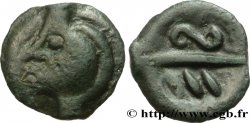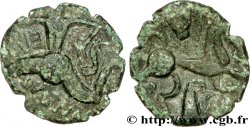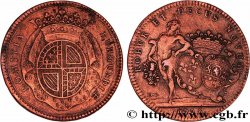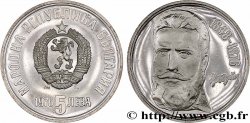bga_290373 - GALLIA - BELGICA - BELLOVACI (Regione di Beauvais) Bronze au coq, “type de Bracquemont”
125.00 €
Quantità
Aggiungi al carrello

Tipo : Bronze au coq, “type de Bracquemont”
Data: c. 50-25 AC.
Nome della officina / città: Beauvais (60)
Metallo : bronzo
Diametro : 16 mm
Asse di coniazione : 5 h.
Peso : 2,82 g.
Grado di rarità : R1
Commenti sullo stato di conservazione:
Bronze avec un droit de frappe molle mais un très beau revers finement détaillé bien que décentré. Patine sombre
N° nelle opere di riferimento :
Diritto
Titolatura diritto : ANÉPIGRAPHE.
Descrittivo diritto : Tête casquée de Rome à droite ; derrière, X.
Rovescio
Titolatura rovescio : ANÉPIGRAPHE.
Descrittivo rovescio : Coq debout à droite, le corps formé d'une tête humaine barbue ; devant et derrière le coq, motif serpentiforme, centré d’un annelet.
Commento
Ce type a parfois été mal classé et interprété. Le dessin du Lambert (pl. 7, n° 35) est repris dans le Traité de Numismatique gauloise d’A. Blanchet en 1905 (fig. 39). Dans leur inventaire de 1889, Muret et Chabouillet n’avaient pas distingué le masque humain qui orne le poitrail du coq. Ce type est aujourd’hui mieux connu grâce aux travaux de L.-P. Delestrée. Cet exemplaire offre un revers particulièrement net et compréhensible !.
This type has sometimes been misclassified and interpreted. The Lambert drawing (pl. 7, n° 35) is included in the Treatise on Gallic Numismatics by A. Blanchet in 1905 (fig. 39). In their 1889 inventory, Muret and Chabouillet had not distinguished the human mask which adorns the chest of the rooster. This type is better known today thanks to the work of L.-P. Delestrée. This example offers a particularly clear and understandable reverse!
This type has sometimes been misclassified and interpreted. The Lambert drawing (pl. 7, n° 35) is included in the Treatise on Gallic Numismatics by A. Blanchet in 1905 (fig. 39). In their 1889 inventory, Muret and Chabouillet had not distinguished the human mask which adorns the chest of the rooster. This type is better known today thanks to the work of L.-P. Delestrée. This example offers a particularly clear and understandable reverse!







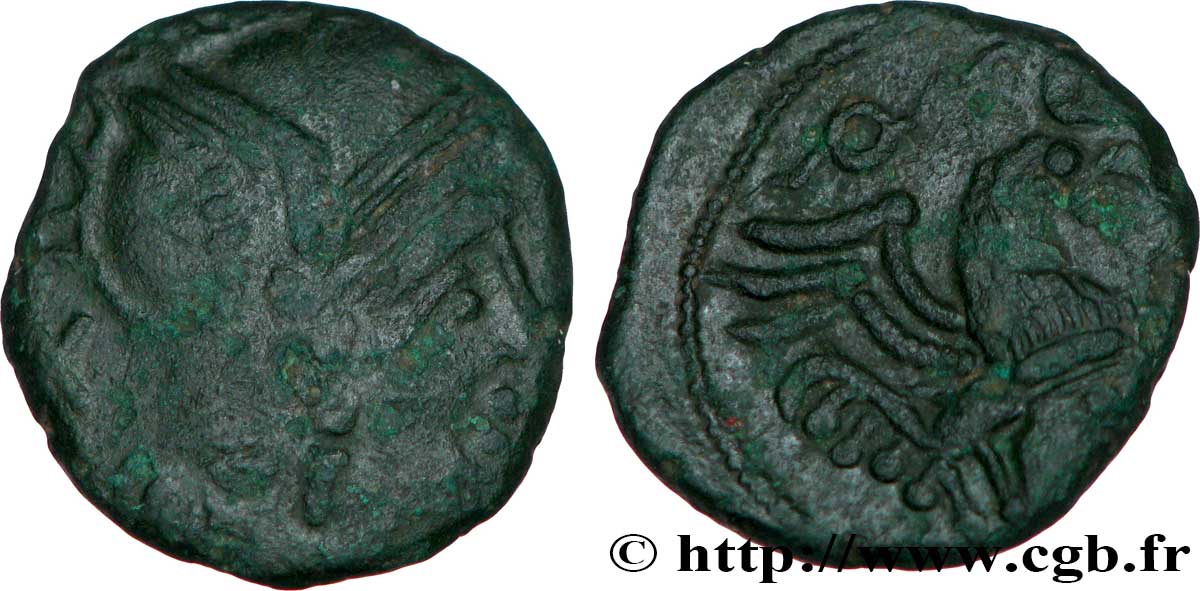
 Segnalare un errore
Segnalare un errore Stampate la pagina
Stampate la pagina Condividi mia selezione
Condividi mia selezione Fai una domanda
Fai una domanda Consegnare / vendere
Consegnare / vendere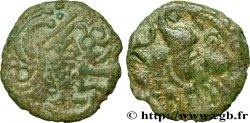
 Descrittivo
Descrittivo

